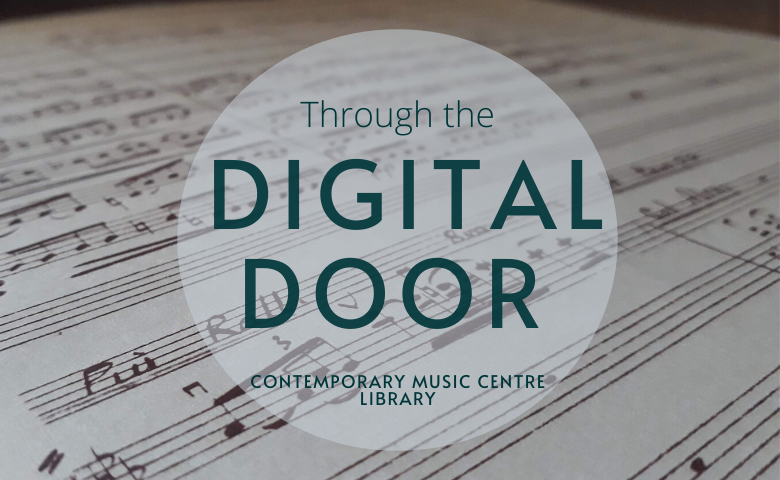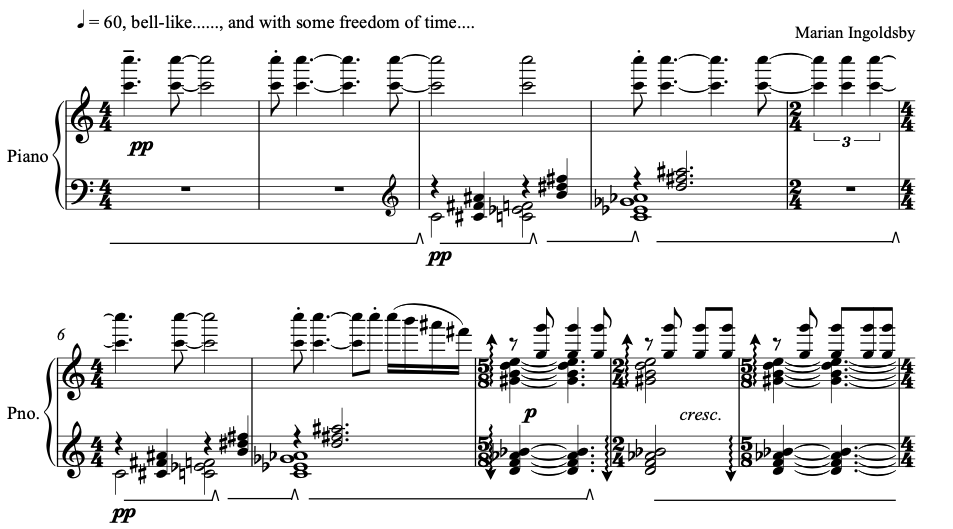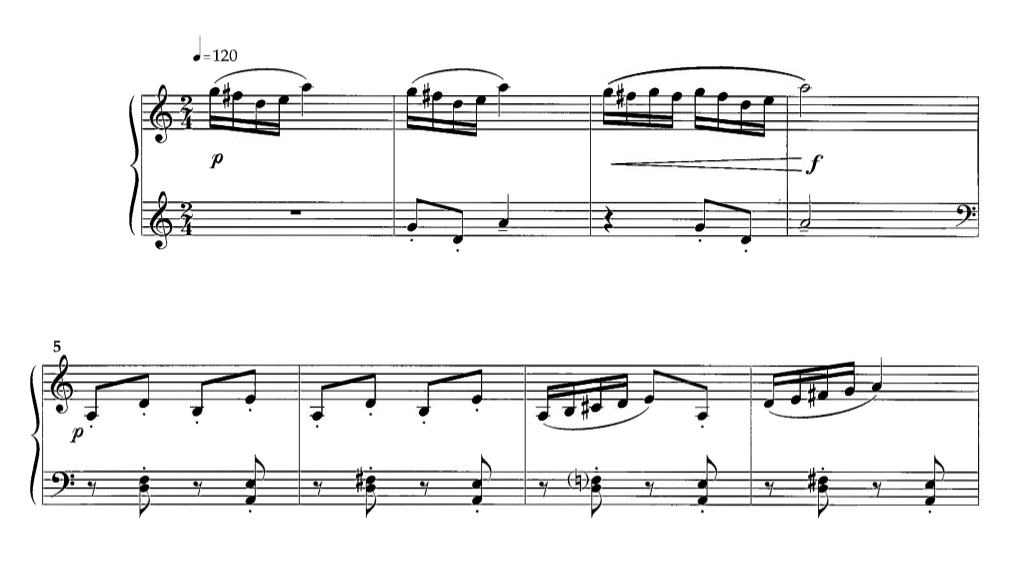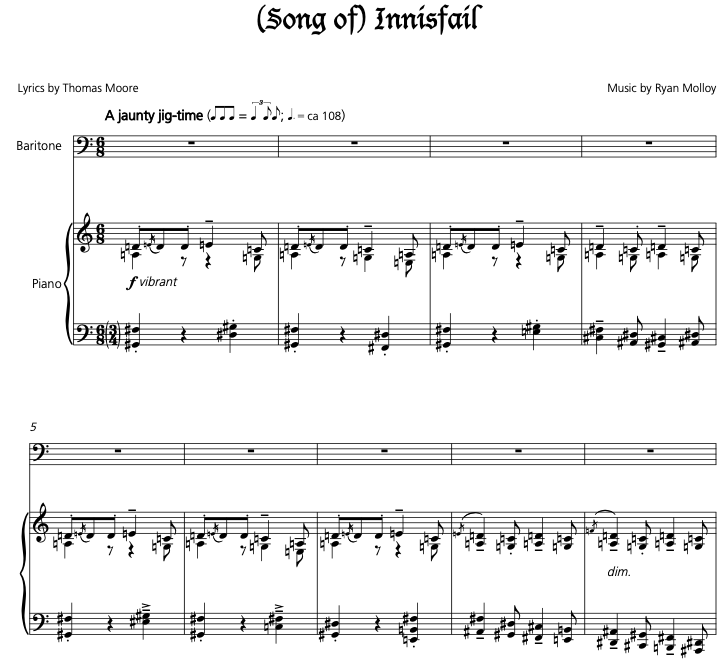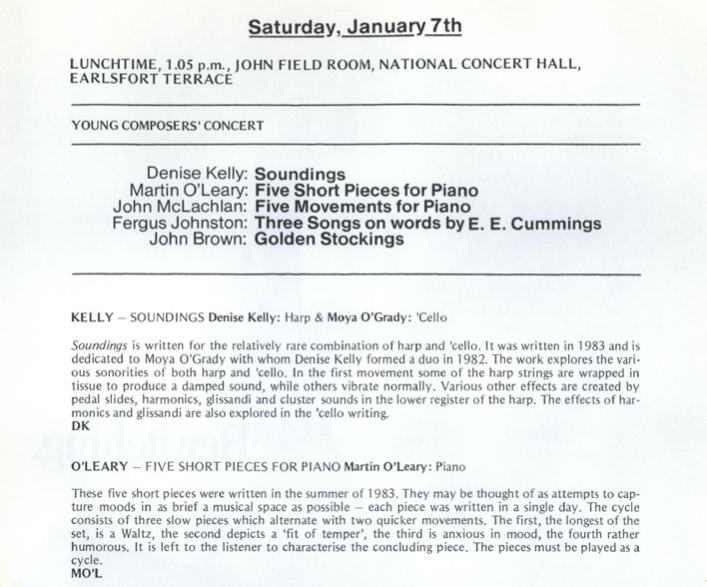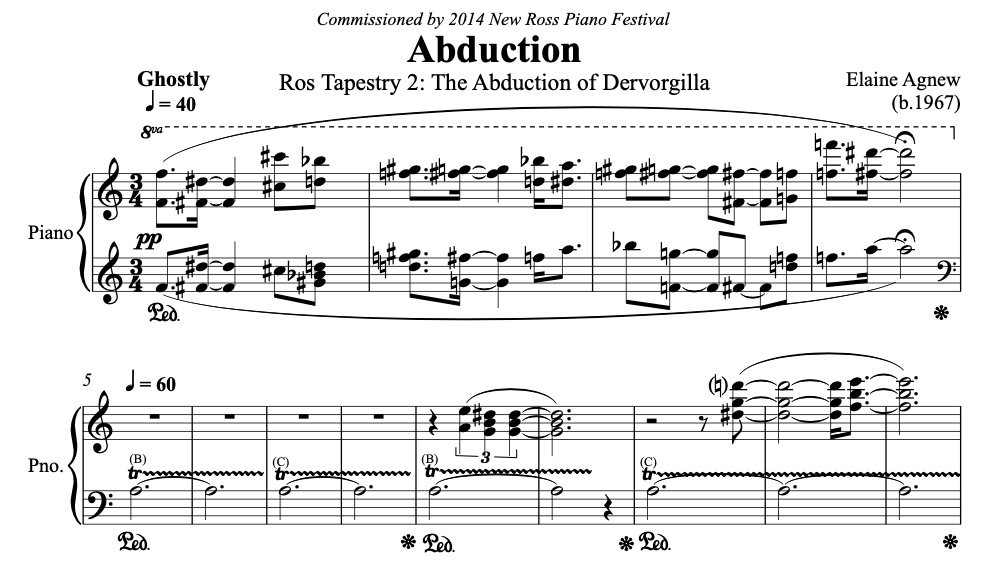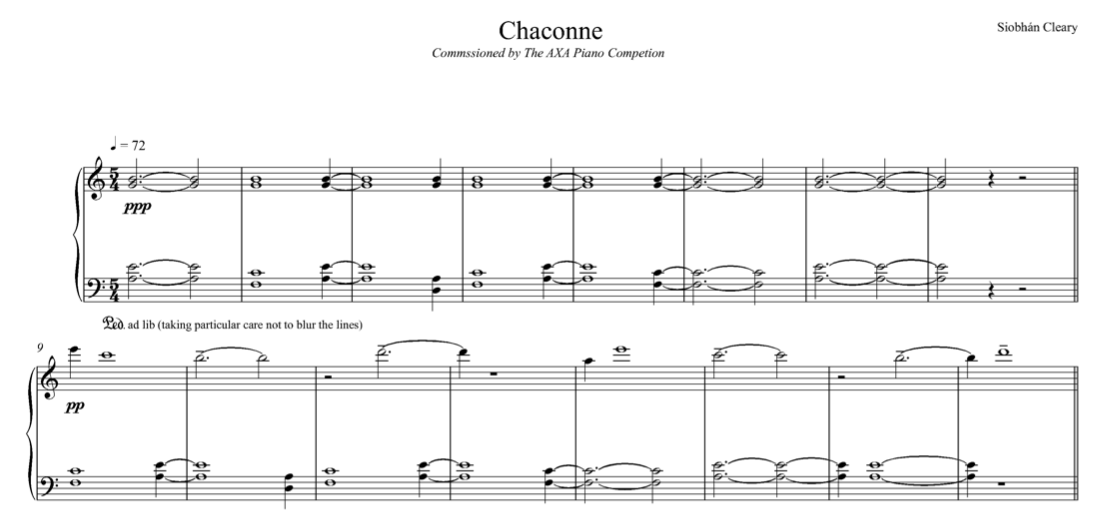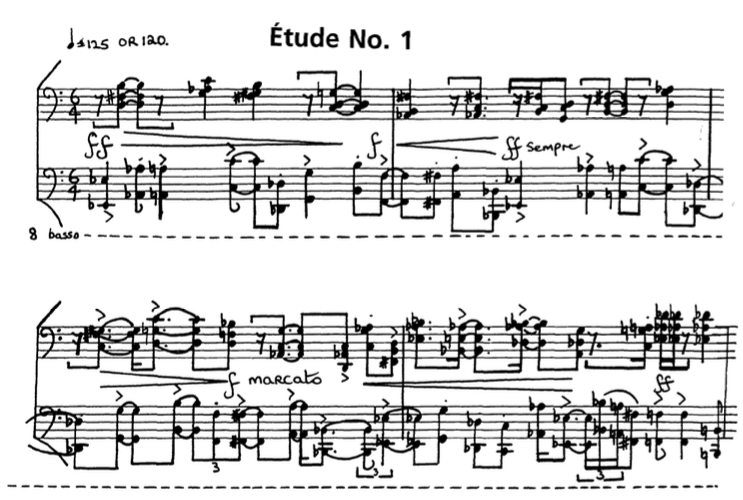Through the Digital Door: Piano works in CMC's Library
This week's Through the Digital Door focuses on works for solo piano. The CMC Library holds over eight hundred works for solo piano in its collection, and the selection below focuses on just a tiny fraction of these works. To explore even more works for solo piano in CMC's collection, visit the Music section of our site.
Marian Ingoldsby: Ros Tapestry Suite XIV: Exchange: The Irish and the Normans mingle at the fair (2016) 6'
This work is the fourteenth work in the Ros Tapestry Suite, commissioned by the New Ross Piano Festival with funding from The Arts Council/An Chomhairle Ealaíon. It was premiered in September 2016 at the New Ross Piano Festival by Jonathan Morris.
My initial thought was to aim for a musically lively and upbeat piece, with circus/amusement-like movement. Later, I became engrossed in the concept of a tapestry in general, the back of which has all the turns, twists and knots that suggest the pattern of life, all threads having their part and adding up to something meaningful, however higgledy-piggledy we conceive it to be. On viewing the tapestry with the assistance of the head weaver, I was pleasantly surprised to see that the back of the tapestry was as neat as the front! In musical terms, I set about ‘mingling’ certain chords, which sometimes clash and at other times co-exist peacefully, either by means of notes in common or with minor alterations. I called this 'tonal tampering.’ One such example is Aflat7, F7, B7 and D7. This harmonic language became part of a world of peaceful revelry. Influences of Ginastera and Kabalevsky abound, with pulsating chords and repeated notes, slightly ‘off’ rhythms, the key concern being to sustain the momentum and sense of hustle and bustle suggested in the tapestry.
Philip Martin: Pick-up Pieces (1994) 15'
This work, made up of seventeen short movements, is written for children at a level of Grade 2 and upwards by composer and pianist Philip Martin.
These seventeen pieces were written in early 1994 for my children, Gwendolen and Samuel. I wrote the six last pieces in the set first. These are more difficult and are designed to explore, for the more advanced young player, the different intervals of the scale. Then I concentrated on producing pieces that might help to develop those at an earlier stage. These, the first eleven pieces in the set, seek to strengthen certain aspects of pianistic development: rhythm, cantabile playing, tonal colour, pedalling (including the use of the sustaining pedal), contrapuntal passage work and chord control. All these things and more are geared towards giving youngsters some fresh and different challenges.
Seóirse Bodley: The Tightrope Walker Presents a Rose (1976) 3'
This work, written in 1976, was written as a present and includes the dedication 'for Olive'.
From time to time, when the occasion presented itself, I have written short pieces as presents. The Tightrope Walker Presents a Rose, written in 1976, is such a piece. In it, ideas based on aspects of traditional Irish music both slow and quick are contrasted with other musical thoughts. These frame and contrast with the Irish musical elements to form a whole in which there are sharp contrasts and some hard edges. The piece ends in a gently quiet resolution.
Ryan Molloy: Innisfail (2015) 31'
This work was premiered by pianist Alexander Bernstein at the Hugh Lane Gallery in Dublin in 2017.
Innisfail, as well as most of my compositional work, is influenced heavily by traditional music, providing a contemporary look at the influences the author of this poem, Thomas Moore, sought to cultivate in his own artistic output. As can be seen in the accompaniment, a jaunty traditional jig-rhythm is established from the outset (with appropriate ornamentation), contrasted by the contemporary polymodal harmonies employed. The result is a modern response to some of the typical ‘classical’ piano accompaniments found in the parlour ballad songs of the late nineteenth century. Innisfail comes from the Irish Inis Fáil meaning the Island of Destiny, named after the Lia Fáil, the coronation stone on the Hill of Tara. Moore’s poem is heavy with romantic imagery of the search for and arrival in Ireland of the ancient Milesian people from A Coruña in Spain around 1700 B.C. This kind of imagery and the portrayal of Ireland as the ‘Island of Destiny’ is prevalent in Moore’s writing and signalled the Celtic Revival which was to continue for a century to come.
Martin O'Leary: Five Short Piano Pieces (1983) 4'
This work was premiered at the Young Composers' Concert at the Dublin Festival of Twentieth Century Music in 1984.
As a composer and pianist, Martin discussed works by Irish composer for the piano in a 2017 AIC New Music Journal feature.
Elaine Agnew: Abduction: Ros Tapestry II: The Abduction of Dervorgilla
This work, written in 2014, is one of fifteen works that make up The Ros Tapestry Suite. This work is available in Ros Tapestry Suite: Volume One.
The Abduction of Dervorgilla depicts the passionate flight of Dermot MacMurrough, King of Leinster, with Dervorgilla, the wife of his enemy Tiernan O’Rourke, King of Breffni. For his brashness, the law stated that Dermot would pay a fine of 100 ounces of gold to the injured husband. The fact the Dermot failed to comply with this possibly changed the course of Irish History. The pair are seen galloping from O’Rourke’s Castle in Roscommon to Dermot’s stone fortress in Ferns in County Wexford with Dervorgilla’s dowry accompanying them. In pursuit is the elderly King in a vain attempt to seize the pair. In the foreground is a ghost from the future - Dermot's daughter, the yet unborn Aoife, who, because of this event would find herself at fifteen the wife of one of the mighty Norman de Clares, Strongbow.
It is this unsettling image of the ghost, Dermot's unborn daughter Aoife, that opens the piece - a quiet and high sequence of slow-moving chords with sustained pedal, creating an eerie sound world. This refrain reappears a number of times in many guises and interrupts a second contrasting theme that is musically responsive to the ruthlessness and anger expressed by the two men, with its woven sweeping circular sense of relentlessness and movement.
Siobhán Cleary: Chaconne (2007) 5'
This work was commissioned as a test piece for the AXA Dublin International Piano Competition and RTÉ lyric fm, and is contained in Piano Album VI alongside the other three works commissioned for the 2007 competition.
This chaconne uses the stately baroque form as its basis. The simplicity of the form appealed to me with its recurrent harmonic progression and continuous variation process which allows for a kaleidoscope of textures and dramatic intensity. The decorative filigree that weaves around the ground bass becomes more elaborate as the piece progresses, but ends with a simple, less-adorned expression of the eight-bar theme.
John Gibson: Nocturne (1977) 6'
This work was premiered at the 1978 Dublin Festival of Twentieth Century Music in Trinity College Dublin. A version for two pianos was later written by the composer.
Nocturne was an attempt at a very simple form conveying the different impressions of night.
This work appears on the CD Reflections in the Water, alongside other John Gibson piano works.
Read and listen to an interview with John Gibson, speaking to CMC's Jonathan Grimes in 2005.
Gráinne Mulvey: Étude No. 1 (1994) 6'
This work was premiered by pianist Dearbhla Collins in Dublin Castle on 8 March 1994, and was written to celebrate International Women's Day.
There are three sections to the piece. The first is rhythmic and the melody is present in the bass line. Gradually this type of texture rises to the highest register and arabesques lead to the development of the opening material. A codetta leads to the final homophonic section which recalls the opening material, ending the piece.

